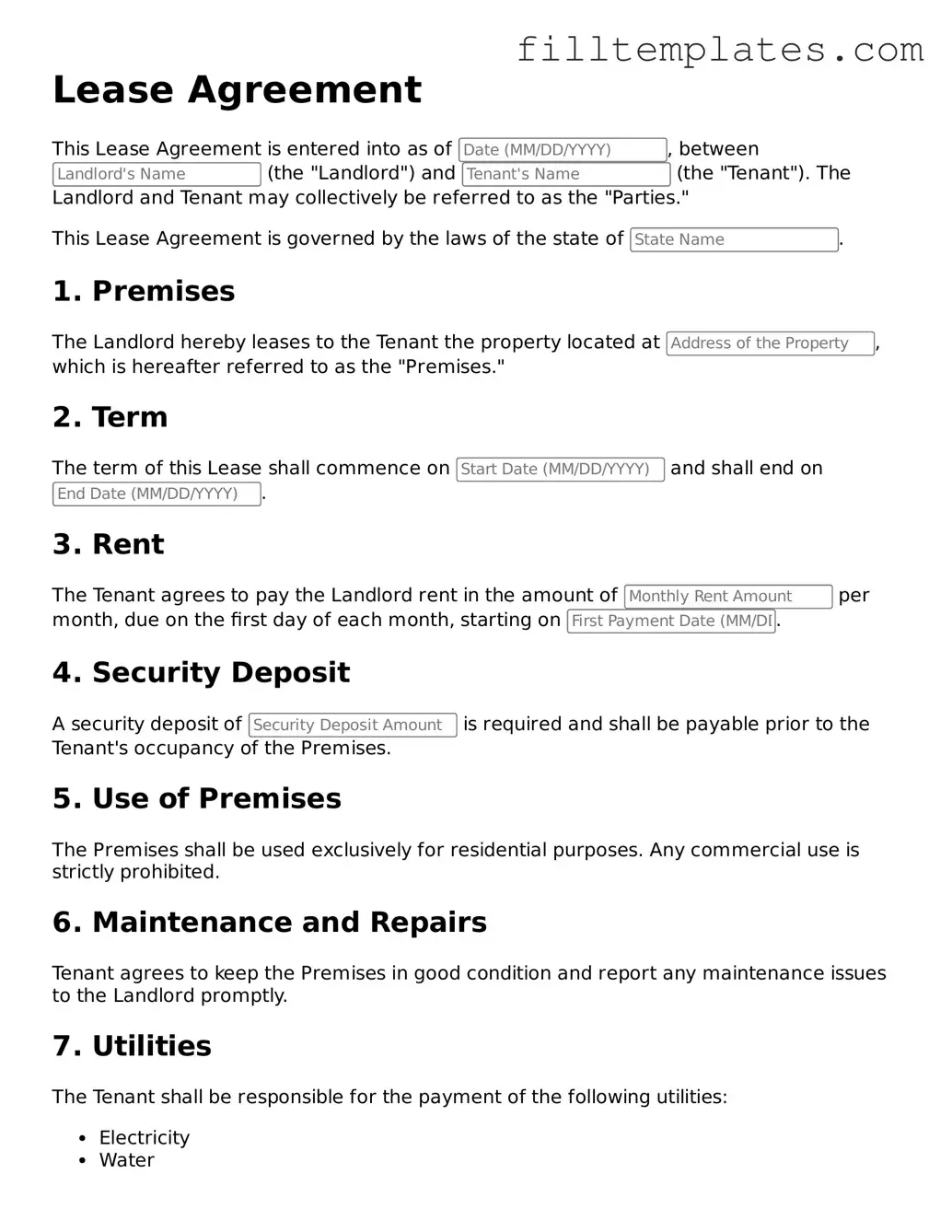Free Lease Agreement Template
A Lease Agreement form is a legally binding document that outlines the terms and conditions under which one party rents property from another. This essential contract protects the rights of both the landlord and the tenant, ensuring clarity and mutual understanding. Understanding the components of a lease agreement is crucial for anyone entering into a rental arrangement.
Open Lease Agreement Editor
